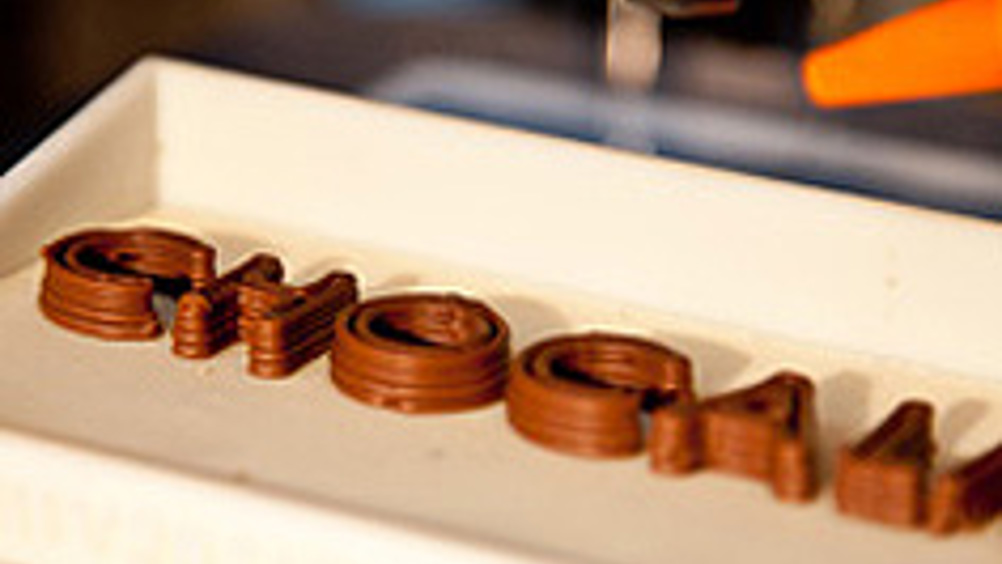Research group develops 3D chocolate-printing technology
Engineers at Exeter University are collaborating with partners at Brunel University and software developer Delcam to create a three-dimensional printer that can build products from chocolate.

Their research is being funded as part of the Research Council UK Cross-Research Council Digital Economy Programme and is managed by the EPSRC on behalf of the Economic and Social Research Council (ESRC), the Arts and Humanities Research Council (AHRC) and the Medical Research Council (MRC).
3D printing is a technology where a three-dimensional object is created by building up successive layers of material. The technology is already used in industry to produce plastic and metal products, but this is believed to be the first time it has been applied to chocolate.
The research has presented many challenges. Chocolate is not an easy material to work with because it requires accurate heating and cooling cycles. These variables then have to be integrated with the correct flow rates for the 3D printing process. Researchers overcame these difficulties with the development of new temperature and heating-control systems.
Research leader Dr Liang Hao of Exeter University’s College of Engineering, Mathematics and Physical Sciences said: ’In the long term, the technology could be developed to help consumers custom design many products from different materials, but we’ve started with chocolate as it is readily available, low cost and non-hazardous.’
Register now to continue reading
Thanks for visiting The Engineer. You’ve now reached your monthly limit of news stories. Register for free to unlock unlimited access to all of our news coverage, as well as premium content including opinion, in-depth features and special reports.
Benefits of registering
-
In-depth insights and coverage of key emerging trends
-
Unrestricted access to special reports throughout the year
-
Daily technology news delivered straight to your inbox










Breaking the 15MW Barrier with Next-Gen Wind Turbines
Hi Martin, I don´t have any detailed parameters for the 15MW design other than my reading of the comment in the report ´aerodynamic loads at blade-tip...